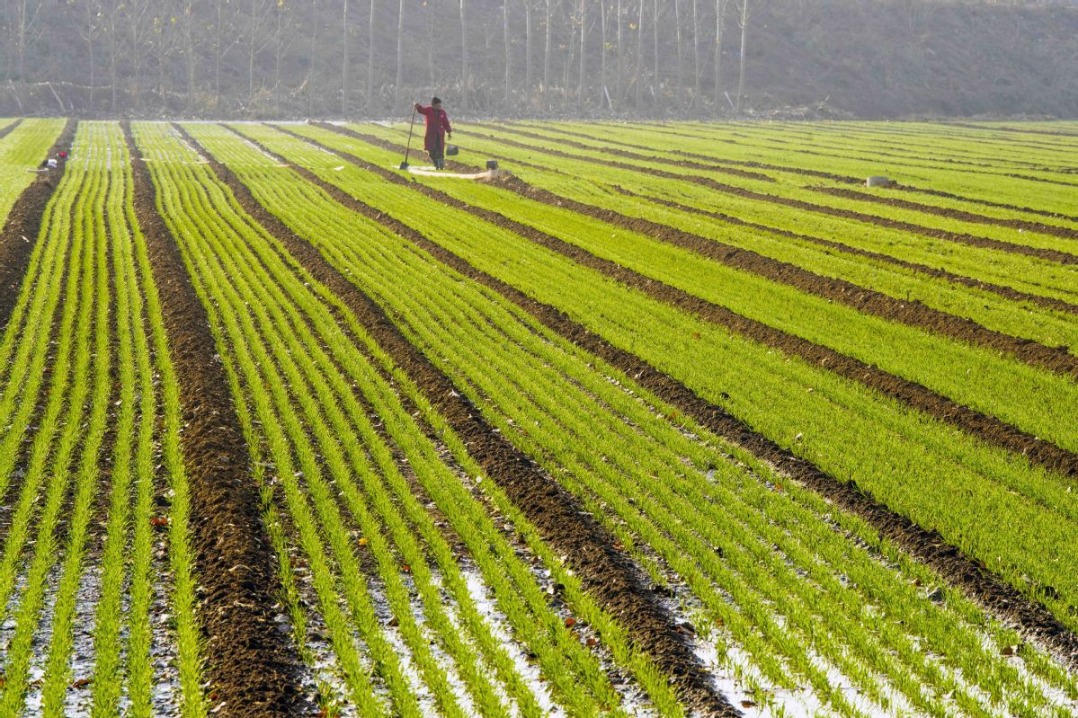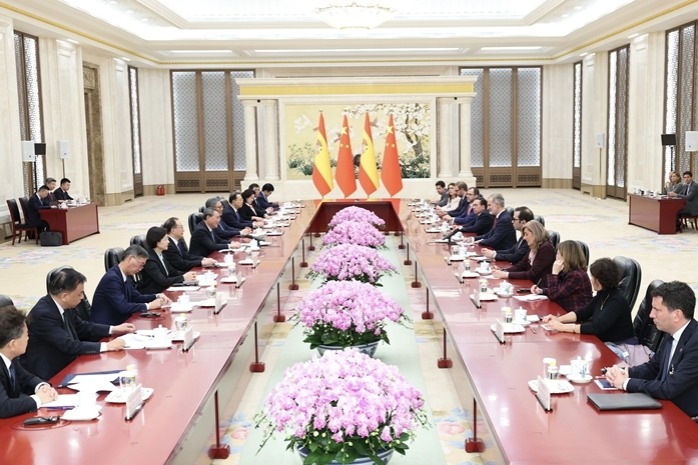Bamboo material flourishes with profits, innovation, low carbon footprint

BEIJING -- As the 55-km Hong Kong-Zhuhai-Macao Bridge has seen record daily passenger trips this February, the artificial island landscape platforms connecting the bridge have effectively supported the daily operations of the world's longest bridge-and-tunnel sea crossing.
The flooring of the artificial island landscape platforms was laid using high tolerance outdoor bamboo panels, covering a total area of over 20,000 square meters.
Since the opening of the bridge in 2018, the bamboo-based composite panels have survived sun exposure, seawater corrosion and typhoons.
China is an important bamboo grower and producer in the world. In 2023, the country's total output value of the bamboo industry was about 541 billion yuan (roughly $74.2 billion), and the export value exceeded 16 billion yuan, according to the Science and Technology Daily.
SLIM BAMBOO, PROSPEROUS INDUSTRY
In Tongzi county of Zunyi city, the mountainous southwestern province of Guizhou, a major bamboo grower Jin Xiaofang contracted 26.67 hectares of forest land, with an annual income of more than 300,000 yuan.
Thanks to the bamboo industry, he has been able to build a good life for his family.
In recent years, the development of the bamboo industry has contributed to the enrichment of farmers and the country's rural revitalization. More farmers in provinces such as Zhejiang, Fujian, Jiangxi and Guizhou have lifted themselves out of poverty thanks to bamboo.
China's bamboo resources, area and stock volume rank top in the world, and it also boasts a large-scale bamboo industry, both in terms of production and trade of bamboo products, according to the newspaper.
At present, China's bamboo forest area exceeds 6.67 million hectares, and nearly 50 million rural people have benefited from bamboo resources.
Bamboo is renowned for its high strength, sound toughness and biodegradability, making bamboo-based composite materials suitable for a wide range of applications. China has tens of thousands of bamboo product varieties, including bamboo weaving crafts, bamboo fiber products and bamboo charcoal products.
"Currently, the majority of the world's bamboo resources are distributed in developing countries," said Lou Zhichao, an associate professor at the Nanjing Forestry University. He also said that China has a competitive edge in bamboo processing.
It was inevitable that China would figure out a pathway to make good use of the bamboo resources, Lou said.
In 2023, China issued a 3-year action plan to accelerate the development of "bamboo instead of plastic," proposing to increase the comprehensive utilization rate of bamboo by 20 percent in 2025.
INNOVATION BRINGS DECARBONIZATION
Studies showed that bamboo grows fast and has relatively higher carbon sequestration effect compared to other types of trees.
"Bamboo forests can absorb 1.46 times more carbon dioxide than fir forests," said Wang Jin, secretary general of Zhejiang's provincial bamboo industry association. The bamboo forests in China can achieve carbon reduction of 197 million tonnes and carbon sequestration of 105 million tonnes annually.
Lou Zhichao and his research team began developing low carbon reconstituted bamboo technology in 2016. To date, they have developed a novel mild pyrolytic technique, low aldehyde and low phenol adhesives, and an evaluation method for the carbon footprint of bamboo products throughout their life cycle.
"The new mild pyrolytic technique was designed to reduce more than half of both the heat treatment temperature and time, as well as cutting the energy consumption," said Lou.
The technique can achieve the thorough removal of nutrients and the non-destructive retention of cellulose inside bamboo.
Additionally, Nanjing Forestry University has constructed a footprint accounting database for bamboo products, covering 12 provincial-level regions and six types of bamboo processing technologies.
These milestones are expected to boost the low carbon development of Chinese bamboo products in high-end markets.
Lou acknowledged that China's bamboo industry should support research institutions and enterprises in joint development of bamboo products, bamboo processing technologies and equipment.
Meanwhile, he called for active participation in formulating the international standards of the bamboo industry and the branding on Chinese bamboo products.
- Ten photos from across China: Nov 7 - 13
- Shanghai's Jinshan district reports economic growth
- Building an effective global communication discussed at Hunan forum
- Cleaning staff transform fallen ginkgo leaves into campus art sensation
- Chinese scientists weave tiny polymer capable of towing car
- Hebei to expand transportation projects during 15th Five-Year Plan period (2026-30)




































